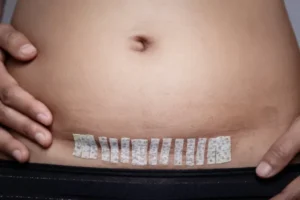Why Madison Roofs Grow Black Streaks—and How to Stop Them Safely

Black streaks on your roof aren’t only an eyesore. They also indicate extended periods of neglect. And if ignored further, these unsightly blemishes can weaken your entire roofing system over time.
Understanding the causes of black streaks on your roof is the first step in remediating the problem and restoring your roof to its full functionality.
We’ve prepared a guide to the common reasons why Madison, Wisconsin, roofs develop black streaks, including how you can fix and prevent the issue.
What Causes Black Streaks On Madison Roofs?
Black streaks on your roof could result from several environmental factors. However, algal growth is the most common cause.
Most algae are responsible for roof staining, although the species Gloeocapsa magma is the most common culprit. Scheduling immediate roof cleaning in Madison WI can help clear your roof of these organisms, restoring it to its original brilliance.
What Draws Algae to Your Roof?
Asphalt shingles were originally made from asphalt and felt material.
As asphalt is an oil-based compound, roofing structures constructed from the material are remarkably moisture-repellent. This minimizes water damage to your roof while also deterring moisture-loving organisms.
However, many shingle manufacturers today add filler materials like limestone and fiberglass to their shingles. Algae notably feed on limestone fillers in asphalt shingles, causing unsightly black streaks on your roofs.
Where Do Algae Come From?
Algae are airborne. Therefore, they can be carried by strong winds over long distances and deposited on your rooftop.
Algae can also spread quickly across the rooftops in a neighborhood.
If your neighbor’s roof has already developed signs of algal growth, it’s best to contact a Madison roofing contractor before these organisms land on your rooftop.

Photo Credit: Freepik.com
What Accelerates The Development Of Black Streaks On Roofs?
The local climate is the most significant risk factor for algal growth on rooftops. These organisms notably flourish in warm, humid weather.
Madison’s climate makes it super favorable for algae growth. While the city experiences colder seasons, the summers can become unbearably hot and humid. June, July, and August are Madison’s warmest months. During this period, daytime temperatures average in the ‘70s to ‘80s, while relative humidity remains in the mid-60s for most of the season.
North-facing sections of the roof typically bear the brunt of algal growth since they receive the least amount of sunlight. The resultant shade causes moisture accumulation, providing the perfect breeding ground for algae.
Besides the local climate, poor gutter maintenance may also encourage algal activity on your roof.
Other Signs of Algal Growth on Your Roof
Blackish or discolored patches aren’t the only tell-tale signs of algal activity on your roof. The staining may occasionally appear green or brown.
Other signs to watch out for include;
1. Mossy Growth
Moss and algae are both moisture-loving organisms. Therefore, spotting moss-like growth equally suggests your roof requires immediate cleaning.
2. Rotting Shingles
As algae feed on shingle filters, evidence of rotting shingles is a sure indication of their extended presence.
3. Musty Smell
Algae, alongside moss and mold, can lead to musty odors. The smell would typically be more intense in the attic.
4. High Moisture Retention
Lingering dampness on your roof is also evidence of algal activity. Urgent remediation is necessary to prevent the moisture from weakening adjacent shingles.
How Might Black Streaks On Your Roof Impact Your Home?
The staining caused by algae on your roof is a repulsive sight. Besides being unsightly to behold, these marks can significantly reduce your home’s curb appeal.
Even if looks don’t matter so much to you, remember that algae feed on the filler materials used in asphalt shingles. Letting these organisms inhabit your roof long enough can lead to a gradual deterioration of the affected shingles, eventually weakening the entire roofing system.
Algae may also pose several health hazards if ingested or inhaled. These include respiratory issues like asthma, gastrointestinal problems, and even skin irritation.
Can Cleaning Remove Black Streaks From Your Roof?
Cleaning is the most effective way to rid your roof of algal staining. Contact a licensed Madison roofing contractor as soon as you spot black streaks on your roof.
A professional company will inspect your roofing system before recommending the best cleaning methodology. While gentler solutions like bleach + water would suffice for minor staining, deeper stains would require specialized algaecides.
After the cleaning work is done, your roofing company will suggest a raft of measures to minimize algal activity on your roof.
Most strategies seek to prevent moisture and debris accumulation by;
- Trimming nearby shrubbery
- Cleaning gutters frequently
- Installing proper roof ventilation
- Reinforcing the roof with algal-fighting materials like copper or zinc strips
- Regular roof maintenance

Photo Credit: Freepik.com
Extending Your Roof’s Durability With Routine Inspections
Black streaks on the roof are easy to shrug off as temporary blemishes that will improve when the rainy season rolls around. However, these marks are a reliable sign that it’s time to contact a professional roofing company.
A Madison roofing contractor will examine the extent of your roof’s algal damage and determine if it’s best to simply clean off the streaks or replace the damaged sections altogether.
A more effective way to address black streaks on your roof is to prevent them from developing in the first place. That requires scheduling comprehensive roof inspections at least twice annually, preferably during the shoulder seasons.
During these routine check-ups, a roofing technician will detect early signs of algal growth and remediate them before they gradually weaken your entire roofing system.







